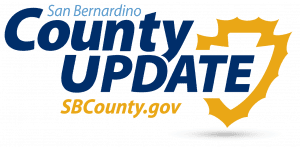

San Bernardino County Public Health urges residents to take proactive measures to protect themselves against respiratory viruses, including COVID-19, seasonal influenza, Avian Influenza (H5N1), and respiratory syncytial virus (RSV). While some people may experience mild symptoms from these illnesses, others can become seriously ill, with some requiring hospitalization, or die.
The respiratory virus season in San Bernardino County typically starts in November and continues through April. Vaccination against COVID-19 and flu remains the most effective way to protect yourself and your loved ones from these viruses and their potentially serious outcomes. This is especially important for those at higher risk of developing severe illnesses, such as older adults and individuals with underlying medical conditions.
“Getting vaccinated and utilizing testing when needed are simple, effective steps we can all take to reduce the spread of illness and keep our communities safe,” said Dr. Sharon Wang, San Bernardino County Health Officer. “The more proactive we are, the better we can protect our most vulnerable residents and avoid overwhelming our healthcare systems.”
The California Department of Public Health (CDPH) released the vaccine recommendations for the 2025-26 respiratory virus season. California state law has also been updated to ensure continued access to vaccines. In most instances, recommended vaccines will continue to be covered by health plans, including Medi-Cal managed care plans and other insurance companies. If you have questions about coverage, check with your health plan or health insurer.
2025-2026 CDPH vaccination recommendations for COVID-19, influenza and RSV
San Bernardino County residents are encouraged to stay up to date on recommended vaccinations to help protect themselves and their loved ones from COVID-19, influenza (flu), and respiratory syncytial virus (RSV).
To view the full vaccination schedule, visit cdph.ca.gov/vaccineschedule.
Children:
- All children 6 months and older should receive the flu vaccine.
- Children ages 6–23 months are eligible for the COVID-19 vaccine, and those ages 2–18 years with risk factors or who have never been vaccinated should also be protected.
- It is recommended that children younger than 8 months receive RSV protection, and those 8–19 months old with certain health conditions may also qualify.
- Vaccination is also encouraged for any child who is in close contact with individuals at higher risk for severe illness or whose family chooses additional protection.
Pregnancy:
- Those who are planning a pregnancy, currently pregnant, postpartum, or lactating are recommended to receive both the COVID-19 and flu vaccines.
- Pregnant individuals between 32 and 36 weeks of gestation are also eligible for the RSV vaccine, which helps protect newborns after birth.
Adults:
- Everyone 6 months and older should get a flu vaccine each year.
- Adults 65 years and older, and younger adults with underlying health conditions or risk factors, are encouraged to stay current with COVID-19 vaccines.
- RSV vaccination is recommended for adults 75 years and older, and for those 50–74 years with certain health conditions.
- Anyone who lives with or cares for someone at higher risk — or simply wants added protection for COVID-19 — can also benefit from vaccination.
How to Protect Yourself from COVID-19, flu, Avian Flu and RSV
- Stay up to date on vaccines as recommended by CDPH.
- Get COVID-19 and flu testing and treatments as soon as you can. Antiviral medications may be available for high-risk individuals and can help reduce the severity of symptoms if taken early.
- Consider extra precautions to reduce spread.
- Wear a mask in crowded indoor spaces.
- Increase ventilation by opening windows and doors.
- Stay away from others if you are sick.
- Wash your hands often.
- Cover your cough or sneeze.
Recognizing Symptoms
Signs and symptoms of COVID-19, flu, avian flu and RSV may vary, but are often similar to the common cold and can include:
- Fever, cough, shortness of breath, fatigue, body aches, sore throat, headache and runny nose.
- COVID-19 symptoms may sometimes include loss of taste or smell.
- Flu symptoms may sometimes include vomiting and diarrhea, particularly in children.
- Avian flu symptoms can also sometimes include eye infections or diarrhea.
- RSV can cause wheezing and, in severe cases, can lead to bronchiolitis or pneumonia, particularly in infants, young children, and older adults.
When to Seek Medical Attention
Seek care immediately if you experience:
- Difficulty breathing, shortness of breath, chest pain, confusion or bluish lips or face.
- A high fever lasting more than three days or experiencing severe weakness.
Also seek medical care if:
- You develop flu-like symptoms after contact with birds, cattle or other farm animals or after visiting poultry or livestock farms.
- You are at higher risk and develop flu symptoms. Contact your healthcare provider right away.
Who is at risk?
Certain groups are at higher risk for severe illness from COVID-19, flu, and RSV, including:
- Adults aged 65 and older
- Children under 5, especially those under 2 years old
- Pregnant women
- Individuals with chronic health conditions such as heart disease, diabetes or asthma
- Individuals with weakened immune systems
Avian Flu (H5N1)
San Bernardino County Public Health has been working with CDPH and the California Department of Food and Agriculture (CDFA) to reduce the risk of spread at farms when avian flu is detected among poultry and/or cattle.
The risk of infection from avian flu remains relatively low. No person-to-person spread of avian flu has been detected in California. However, individuals who work closely with birds, poultry, or cattle should continue to use caution and follow proper safety guidelines when handling sick or dead animals. Getting the seasonal flu vaccine is also recommended to help reduce the risk of coinfection with both seasonal flu and avian flu.
For more information on avian flu please visit: dph.sbcounty.gov/birdflu.
Influenza-Like Illness surveillance dashboard
The county’s Influenza-Like Illness (ILI) surveillance dashboard is an interactive and flexible platform that combines data from multiple sources to provide a comprehensive view of the infectious disease response in the county.
The ILI dashboard was developed using ESRI technology for data visualizations on the number of ILI-related hospitalizations, ER visits, respiratory disease cases, and deaths due to influenza-related illnesses. By monitoring the prevalence of influenza-like illness in the community, public health officials can more accurately track trends and take action to better protect the public.
To learn more and explore public health resources, visit dph.sbcounty.gov. To schedule a vaccination appointment near you, visit MyTurn.ca.gov. Together, we can reduce the impact of respiratory viruses in our communities.
Additional County Update News – October 23, 2025
- Board actions – Oct. 21
- Behavioral Health launches WE2 Program – Wellness, Weight Loss, Emotion Control, and Exercise Program
- Youth Enrichment and Exploration Program: Helping foster youth grow, explore and thrive
- Celebrating Code Enforcement Officer Appreciation Week
- County comes together for the Great ShakeOut and Ready SB County App launch
- Ani-Makerspace at Fontana Library inspires creativity through partnership with Garner Holt Education Through Imagination
- San Bernardino County destinations: Silverwood Lake trails
- Call for submissions: Share your favorite San Bernardino County destinations
- San Bernardino County history: San Antonio Regional Hospital
- Things to do in San Bernardino County
- Pet of the Week: Katrina
